Ashburton Water Zone Committee progress report
Each of Waitaha/Canterbury's water zone committees has an action plan which outlines how they will work with the community to deliver their aspirations for freshwater as outlined in the Canterbury Water Management Strategy (CWMS). Committees report annually, to let the CWMS partners and community know how things are tracking.
2022/23 progress report
From the chair: Setting our priorities to 2024
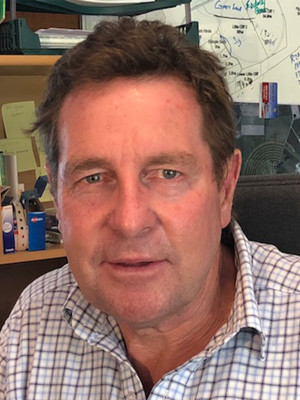
William Thomas, Ashburton Water Zone Committee Chair
We have had another busy year with many issues discussed and outcomes sought.
In November 2022 the committee welcomed returning Environment Canterbury Councillor, Ian Mackenzie, and new Ashburton District Councillor Rodger Letham, replacing Councillor Stuart Wilson. Sadly, Councillor Letham passed away on 17 December. A moment's silence was observed for Councillor Letham at our January meeting and Ashburton District Councillor Richard Wilson was welcomed to the committee.
Te Rūnanga o Arowhenua representative James Meager stepped down in April. We are grateful for James' contribution, and he thanked the committee for the opportunity. We await the appointment of his replacement and having important input from mana whenua on our committee to help shape our priorities.
In May, the committee visited the Rangitata River to learn about Ko te whakahaumanu o te Rakitata awa, or Rangitata Revival. This partnership programme brings together Te Rūnanga o Arowhenua as manawhenua and kaitiaki of the awa, government agencies and the community. We learnt about the programme and shared our local knowledge and perspectives.
I have heard talk questioning the future of the zone committees and, as catchment groups get stronger, I can understand why. However, it is imperative that the community and interested groups have a forum where they can present their findings, express concerns and keep councils accountable. At present I'm not convinced such a forum is available other than the zone committee.
William Thomas.
Committee's key achievements for 2022/23
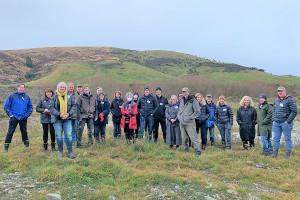
Water zone committee members, councillors and Environment Canterbury staff visiting Near River Recharge site in Upper Hinds.
- Environment Canterbury Regional Policy Statement engagement
- The Hinds Drain Working Party 5-year review was received
- We recommended funding for Carters Creek Catchment Group to implement water monitoring and analysis to determine sources of E. Coli in the creek
- Funding was recommended to support control of invasive weeds at Pudding Hill Stream
- We supported community engagement on Ōtūwharekai Ashburton Lakes by co-hosting a successful open day at Te Puna a Taka/Lake Clearwater
- We recommended funding a nitrate sensor in a constructed wetland to quantify the nitrate reduction and determine the effectiveness of mitigation to reduce the nitrate load in streams and rivers.
Local projects helping to deliver on CWMS targets
Read some of the stories about what is being done in the zone to deliver on the CWMS targets.
Working with key partners
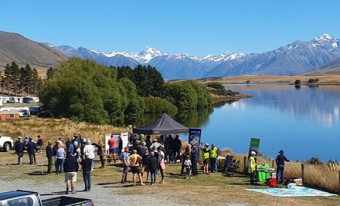
The Ōtūwharekai pop-up event
The health of the Ōtūwharekai Ashburton Lakes was the focus of a community pop-up day, co-hosted by the water zone committee in February.
Held on the shore of Te Puna a Taka/Lake Clearwater, the event provided an opportunity for the hut-holders, farmers, and conservation groups who attended to learn more about initiatives to improve the lakes' health.
It highlighted actions underway by the Ōtūwharekai Working Group (made up of Papatipu Rūnanga with connection to the area, councils, crown agencies and landowners) and other organisations to restore and enhance this special location. These actions include nutrient reductions on-farm, additional science investigations, the removal of long-drop toilets at the settlement, and biodiversity surveys.
Younger visitors had fun learning about human impacts on waterways and everyone enjoyed the sausage sizzle, run as a fundraiser by the local Fire and Emergency NZ crew.
This work helps meet these CWMS targets: Environmental limits, Recreational and amenity opportunities, Ecosystem health and biodiversity and Kaitiakitanga
Action Plan budget project
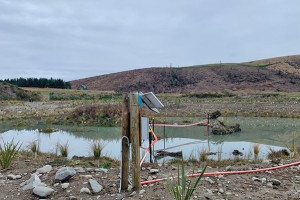
The trip took members to MAR and NRR sites
The Hekeao Hinds field trip, held in winter 2023, provided an opportunity for water zone committee members and councillors to learn about the innovative techniques being used by the Hekeao Hinds Water Enhancement Trust (HHWET) to improve local water quality.
HHWET trustees took participants to several Managed Aquifer Recharge (MAR) and Near River Recharge (NRR) sites to learn about the history of the different sites, the work that has been done to date, and future plans.
A highlight was the NNR1 site in the upper Hinds damaged by the 2021 floods, where work has been undertaken to save harakeke/flax from metres of mud and reconstruct a wetland. Around 10,000 native plants have been installed in this area.
Since construction improvements have been shown in water quality, river flow, groundwater level, fish population monitoring, and bird life.
The Ashburton Water Zone Committee recommended funding of $8,000 towards the cost of maintenance of native plants.
The CWMS targets are: Environmental limits, Ecosystem health and biodiversity and Drinking water
Ground work in the zone
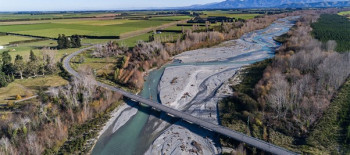
The Hakatere/Ashburton River
New minimum flow limits have now been set to keep more water in the river and protect the natural character and mauri of the Hakatere/Ashburton River.
The minimum flows were recommended by the zone committee in its Zone Implementation Programme and developed through the Land and Water Regional Plan (LWRP) process under the Resource Management Act, which included submissions from the community.
From 1 July 2023, affected consent holders must stop taking water when the flow in the Hakatere/Ashburton River mainstem at the State Highway 1 Bridge recorder site is less than six cumecs (6000 litres per second). There are also minimum flow restrictions on tributary waterways.
More water will be left in the river system, leading to increased surface flow and/or higher connected groundwater water levels compared to the current state. It is expected that the changes will improve conditions for fish migration and water quality, especially at the hāpua and river mouth.
This work helps meet these CWMS targets: Environmental limits and Ecosystem health and biodiversity
Delivering the community's vision for freshwater
The Canterbury Water Management Strategy (CWMS) puts some responsibility for finding solutions for freshwater management in the hands of the community, with support from councils, Ngāi Tahu, and others. The strategy sets out freshwater goals and targets to deliver the community’s vision for freshwater.
Each of the community-led water zone committees work collaboratively to develop freshwater recommendations for councils to help ensure plans give effect to these goals and targets.
Within each target area, there are several specific time-bound targets to be achieved and these are monitored and reported on to ensure progress is being made.
The CWMS targets are: Environmental limits, Ecosystem health and biodiversity, Natural character of braided rivers, Kaitiakitanga, Drinking water, Recreational and amenity opportunities, Water use efficiency, Irrigated land area, Energy security and efficiency and Indicators of regional and national economies.
Future challenges and opportunities – 2023/24
The committee has supported the setup of the Mid-Canterbury Catchment Collective and we will watch with interest as this great initiative grows and takes communities with it.
The committee will remain interested in the anticipated improvement to the Hakatere/Ashburton River following the consent review.
The zone committee, Carters Creek Catchment Group and the community are concerned about Carters Creek flooding issues, particularly in Tinwald. Responsibilities for flood mitigation are shared by Ashburton District Council and Environment Canterbury and they are working together to address future funding for the necessary work.
The committee shares the community's concern regarding the state of the Ōtūwharekai/Ashburton Lakes and will continue to support improvement actions in any way possible.
Find out more
- Learn more about the Ashburton Water Zone Committee.
- See the Ashburton Water Zone Action Plan 2021-2024.
- Download the Ashburton Water Zone Implementation Programme (PDF File, 13.1MB).
